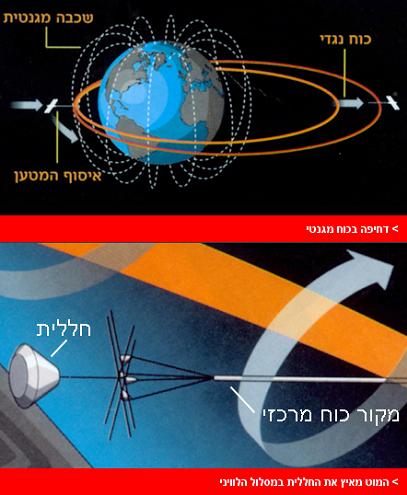Scientists are exploring a revolutionary way to reach the moon: injection.
Popular Sciences

As part of NASA's new approach to space exploration, two goals were placed at the top of the list: to return and land on the moon - and to save money. A 144 km long pole that circles the Earth and is powered by solar energy may help the space agency achieve both goals. In its rotational movement - like a magic wand - the rod can capture at the lower end of its rotation a manned spacecraft orbiting the Earth and propel it into space without the need for thousands of kg of rocket fuel.
Do not mistake the system, known as MXER, for an esoteric project in physics. NASA has invested 1.5 million dollars in the project and it is being developed by engineers from Tennessee Technological University in collaboration with scientists from Tethers Unlimited from Washington. A model of the capture mechanism, on a scale of 1:10, has already been successfully tested in a laboratory.
The long-term goal is to send astronauts to the moon, but in the first phase the system will be used to send satellites to a higher orbit. According to the president of Tethers Unlimited, the system can save, over 10 years, rocket fuel worth 500 million dollars, assuming that the payload to be launched will weigh about 2 tons. NASA hopes that the MXER system will begin orbiting in space in 2018.
The stages of the spraying process
1. Preparations
The rod is folded inside a chamber that is launched into orbit, where it unfolds to its full length - 144 km. To start the rotation, a power source in the center of the rod sends an electric charge along its entire length. The weights at both ends of the bar rotate around the center and stabilize the bar.
2. Capture
The rod accelerates in the satellite orbit to a speed of 34,000 km/h. An instruction is sent to the spacecraft to be in the right place at the right moment. The capture mechanism, which weighs 250 kg, resembles a square lasso. When the spacecraft reaches the capture range, sensors direct the lasso to the spacecraft's hook, which is 60 meters long, in a fraction of a second.
3. Ascension
The rod continues to rotate and accelerates the spacecraft to a speed of 5,760 km/h at the high end of the orbit.
4. Dispatch
As soon as the spacecraft reaches the high end of the orbit - that is, the furthest distance from the Earth - it is launched.
5. Descent
After transferring the torque to the spacecraft making its way to the moon, the rod rotates in the direction of the lower end of the orbit and is aided by the Earth's magnetic field in order to continue the rotation towards the upper end of the orbit.
After the payload is launched, the rod loses speed and its trajectory is shortened. In order to return to the upper end of the orbit and continue to perform tasks, the pole is helped by the Earth's magnetic field. With the help of the energy that comes from the solar collectors and through the built-in flight system, electrons are launched from the base of the pole that collide with the Earth's magnetic layer and the opposite force pushes the pole away from the Earth.
